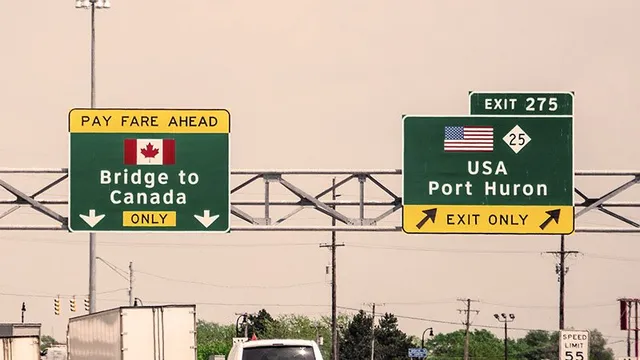Most Visa Waiver Program (VWP) eligible travelers visit the United States via commercial air or sea carriers, or by crossing land borders. Typically, travelers enter the U.S. through the Canadian border, although entry from Mexico is less frequent. This article explores the requirements for these travelers when entering or exiting the U.S. by land, and examines some complications that may arise with Customs and Border Protection (CBP) when mixing land travel with air or sea travel.
Requirements for Entering the U.S. by Land
Crossing the Canadian Border Without an ESTA
Starting October 1st, 2022, travelers holding passports from Visa Waiver Program countries entering the United States from Canada will need an ESTA. The traditional paper-based I-94W form will no longer be used at the land border. A list of land, ferry, and rail crossing points from Canada to the USA can be found here.
Entering the U.S. by Land with an ESTA
Travelers with an ESTA will experience a more streamlined entry into the United States as they will not be required to complete an I-94W form at the land border. Completing an online ESTA application is faster than filling out a paper form, though it can take up to 72 hours to get approval. Travelers are advised to apply before they drive to the U.S. border.
Understanding the I-94 Form
What is an I-94 Form?
The I-94 form is used to process the arrivals of non-U.S. citizens into the United States by land. There are two types:
- Form I-94W Nonimmigrant Visa Waiver Arrival/Departure Record: Specifically for travelers from VWP eligible countries.
- Form I-94 Arrival/Departure Record: For non-VWP and non-U.S. citizen travelers.
Information Requested on an I-94W Form
An I-94W form captured the same information as an ESTA application. CBP decided to remove the I-94W requirement in favor of the more efficient ESTA system.
Departing the U.S. by Land, Air, or Sea
Departing the U.S. by Land
Travelers departing the U.S. by land now have their ‘Departure Record’ digitally recorded, eliminating the need for a paper stub. The electronic Departure Record contains details such as the port, date, carrier, and flight number or ship name of the departing journey.
Departing the U.S. by Air or Sea
If departing the U.S. by sea or air after arriving by land, the electronic Departure Record will capture all key information regarding your departure.
Evidence of Non-Overstay
Verifying Departure Records
Applicants should check their digital I-94 records online to ensure accuracy. Retain the following evidence to dispute digital I-94 records if conflicts arise:
- Original boarding pass used to depart the U.S., Canada, Mexico, or other territories.
- Photocopies of your entire passport, showing arrival and departure stamps.
- Payslips showing income earned after departing the U.S. within the permitted stay duration.
- Bank or credit card records showing transactions outside the U.S. after your visit.
- School transcripts or attendance records proving your presence outside the U.S. at the claimed time.
Entering the U.S. from Mexico
The same rules and procedures apply to VWP travelers arriving by land from Mexico.
Conclusion
VWP eligible travelers entering or exiting the United States via the Canadian or Mexican borders must apply for an ESTA. This expedites CBP processing at land borders. Paper-based I-94W forms are no longer used due to potential complications. Travelers should apply for an ESTA in advance and plan their travel itinerary in North America accordingly.
